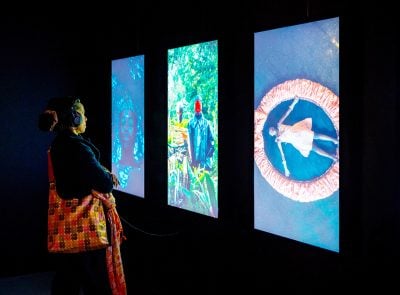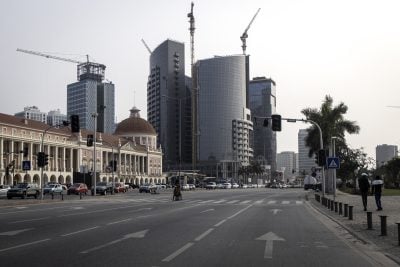Ethiopia is rapidly rising among the ranks of innovative African countries. After manufacturing the world’s first Amharic language mobile handsets (See African Business, February 2012), Ethiopians in one of the more remote regions of the country have turned their attention to mining, cutting and polishing the beautiful stones found in the region. But, as Magda Benigna reports from Ethiopia, they could do with some expert marketing advice.
Bahar Dar is a very pleasant city on the shores of Lake Tana, the largest lake in Ethiopia, famous for its many islands and seclusive orthodox monasteries. Now, thanks to the regional government’s vision, Bahar Dar is fast becoming a centre for innovation in the country. A project to cut and polish semi-precious stones has the potential of providing thousands of new jobs to local youth by teaching them new skills.
The Lapidary Project, which started in 2008 in the Amhara region, is the first of its kind in Ethiopia. “It is a new industry in Ethiopia, a new sector, and we are pioneers in our region,” said Dereje Negash, Head of the Project Office, based in Bahar Dar, the regional capital. “For the first time, we are learning to use our mineral resources and training young people to transform them into an attractive end product.”
The initiative originally came from Milion Belay, an Ethiopian national who had lived for many years in the US, and who realised the industry’s potential in Ethiopia. With its unique geology, Ethiopia, and Amhara in particular, are rich in minerals which until now were not processed in the country.
The project comes at a time of huge transformation for the Ethiopian large-scale mining sector, with the relatively recent discovery of new deposits of platinum, tantalite, soda ash and phosphate rock in addition to the already great potential of gold. The government of Ethiopia has made development of the country’s mineral wealth one of its leading economic objectives – it wants to generate 10% GDP from the mining sector within the next decade.
The regional government of Amhara invested 120m Ethiopian birr ($6.87m) when it took the Lapidary Project on board – mainly to buy machinery and provide the training to set up workshops. “Currently we have 17 workshops all over the region, all equipped with the same state-of-the-art machinery,” explained Negash. “The first year we trained 34 professionals with some background in geology, who have since become trainers of trainers. Now we already have 1,800 youth qualified as stonecutters.”
Most of the workshops were established in other cities or industrial clusters such as Gondar, the historic city north of Lake Tana, or Dessie, a city located southeast of Lalibela, Ethiopia’s famous religious centre. Other training centres are based in more rural areas close to places where the stones are mined.
The overall aim of the project is to give new job opportunities to the many youth coming out of school, as well as to provide landless farmers in the region’s arid high plateaus with additional income. “We also train farmers to mine the stones while taking care of the soil. These stones are usually found in areas difficult to dig or mine, and everything has to be done by hand,” said Negash. “Some of these areas are not even accessible.”
With the help of geology experts, the Amhara region has identified over 10 different types of semi-precious stones which include opal, onyx, jasper, amethyst, agate, calcedony and serpentine. “Opal has been mined for a while, but it is exported rough to India and China where it is cut and polished. We now want to have the stones transformed in Ethiopia,” he adds.
Lack of market knowledge
The stonecutters in the various areas are grouped into cooperatives (of a minimum of 10 stonecutters). In addition to the training, the cooperatives can benefit from long-term loans to buy the equipment. They buy the raw material, which is then transformed into attractively polished stones.
“At this point, it is still difficult for them to buy some of the more expensive stones. They just can’t afford them, and often the farmers prefer to sell directly to a broker for the export market,” explained Negash. “We would like to change that.”
Currently, all the cooperatives taken together have built up a joint capital of 340,000 birr ($19,476). With that amount, they can afford to jointly buy one kilo of opal at a current cost of about 300,000 birr ($17,184), which divided amongst them would amount to only about 32 grammes per cooperative.
However, other stones are less costly and therefore more affordable. “We’re just beginning, so we still have a way to go,” adds Negash.
As head of the Lapidary Office, which shares premises with the region’s Technical and Vocational College, Negash believes it is important to protect the nascent cooperatives and make sure they have the opportunity to buy the stones.
In spite of its successful training of young students, the biggest hurdle the project is facing is the limited outlets for its products. International markets are difficult to access and the local market is limited for this type of good. “According to our new strategy, the training should reflect the demand from the industry, however, we’re in a bottleneck in that respect, we can’t find where our products are needed,” explained Negash.
Part of the problem is due to the fact that the cooperatives are not aware of the requirements and tastes of international markets. So they keep producing stones cut according to a limited number of classic templates, such as a heart shape, a cabochon or a semi-sphere shape, but overall, they are too isolated from the market. Another issue is the lack of knowledge in setting and mounting the stones to make attractive finished products such as jewellery or decorative items.
To try to remedy this and help the project develop further, Manale Dagnew, an internationally recognised Ethiopian designer, is now bringing her design experience and knowledge of international markets to the project.
She is working with one workshop in particular in the small village of Gayent in the rural highlands, to create new designs with a view to launching a line of jewellery “Made in Ethiopia”, using the semi-precious stones of Ethiopia mounted by traditional Ethiopian silversmiths based in Addis Ababa.
“Developing skills is the future for the young generation of Ethiopia. Without new skills, there is no hope there, the land is not giving,” she said, “We’re only at the very beginning of developing the artisan skills which get built over many generations.”
She also knows that her own contribution is not enough. The Amhara region will need many other projects such as Manale’s to turn stonecutting into a thriving industry, capable of giving long-term job prospects. In the meantime, Manale is hoping that her work there will inspire others to follow suit.
On his part, Dereje Negash also sees potential elsewhere, in assembling the needed machinery for instance. “Until now we have been importing the machines, but that’s expensive for us. Now, with the help of the Polytechnic College, we will start assembling the eight-inch slab-cutting machine in Bahar Dar. So that’s even more potential for our region,” he concluded. This is yet one more example of the drive of innovations sweeping the country and the continent.
Want to continue reading? Subscribe today.
You've read all your free articles for this month! Subscribe now to enjoy full access to our content.
Digital Monthly
£8.00 / month
Receive full unlimited access to our articles, opinions, podcasts and more.
Digital Yearly
£70.00 / year
Our best value offer - save £26 and gain access to all of our digital content for an entire year!
 Sign in with Google
Sign in with Google 


